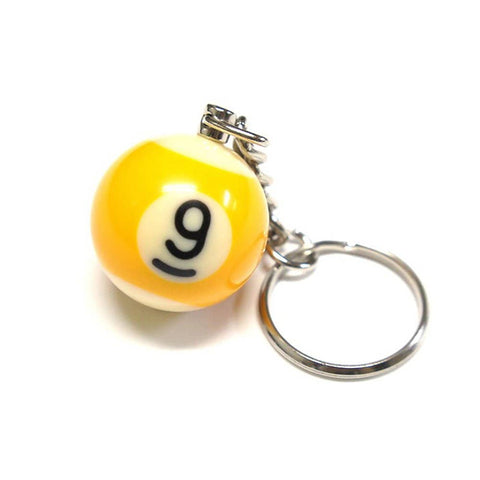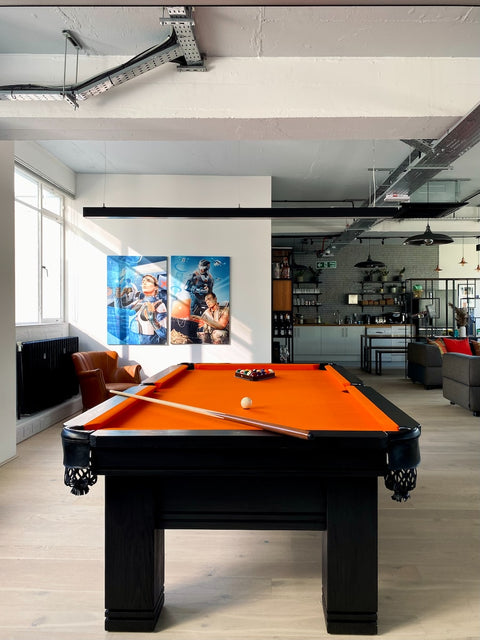Learn to Play Billiards
Learn to Play Billiards just like the KINGS & QUEEN of old

Learn to Play Billiards -
An Overview of How to Play Billiards
When you play Billiards, it is a game that demands the utmost precision of eye and touch. Billiards itself consists of scoring points by striking one of three balls with a wooden cue to contact the other two, or one of the two.
Learn to Play Billiards -
The Markings of the Table
To play Billiards, a line drawn from the bottom cushion and parallel with it is called the Baulk-line, and the area within this and the bottom cushion is called Baulk. From the centre of this line, a semi-circle on the Baulk or inner side of the line is marked which is called “D”.
Learn to Play Billiards -
The Plan of the Game
The white ball which the player strikes with his cue is called the “cue ball”; the other two (one white, one red) are called the “object balls”. Each player uses one of the white balls, which are distinguished from each other by one, called Spot, which is marked with a black spot at opposite extremities. The other is called Plain. The players toss or “string” for choice of balls, the winner declaring “I’ll take Plain” or “I’ll take Spot”.
To “String”. This means that each player directs, with his cue, from “hand” (i.e from the Baulk-line) a white ball “up the table, that is, to the top cushion and the player who succeeds in causing his ball to come to rest nearer the bottom cushion whether it rebounds or not, is the winner, and has the choice of balls, and of playing first or second as he chooses.
Learn to Play Billiards -
Scoring when you Play Billiards
When you play Billiards, the player who scores the most points wins. Scoring is achieved as follows:
1. By Cannons. A cannon is made by causing the c-b (i.e. the ball propelled by the player's cue) to contact the two o-b’s in succession. Two points are scored by a cannon whether it is from white to red, or red to white.
2. By “Losing Hazards” (“Losers”). A losing hazard is made by causing c-b to enter a pocket after contact with one of the two o-b’s. A losing hazard off the red is rewarded by; 3 points, and off the white by 2.
3. By “Winning Hazards” (or “Pots”). A winning hazard, or pot, is made by making the c-b contact one or other of the two o-b”s, and causing it (the o-b) to enter a pocket. “Potting or pocketing the red ball scores 3 points, potting the white 2.
When a losing hazard and cannon are made in the make stroke, the player scores 2 points for the cannon and 2 for the hazard, if the white is struck first, and 2 for the cannon and 3 for the hazard if the red is struck first. If both object balls are struck simultaneously, and a hazard is made as well, 2 points are scored for the cannon and 2 for the hazard. If more than one hazard or a combination of hazards and cannons are made in the same stroke, all are scored.
Learn to Play Billiards -
A "Break" when you play Billiards
While the player continues to score he remains at the table, and only after missing a stroke does his visit or “turn” end, whereupon his opponent takes his place.
The purpose of playing Billiards, is as implied above, to make in sequence as many cannons, losing and winning hazards as possible, and thereby to score more points than one’s opponent. To play Billiards with skill is however to contrive that one successful stroke leaves, when the balls have come to rest, another opportunity of scoring. In other words, by controlling the balls to leave one scoring opportunity after another.
Learn to Play Billiards -
The Baulk Area and its' Significance
When c-b has entered a pocket as the result of a losing hazard, the player plays his next stroke from the “D” and he must play out of the Baulk area. He may place the c-b anywhere in the “D” space, including the semi-circular line and the part of the Baulk-line which forms the straight part of the “D”.
If he places his ball on this line then it must be exactly on it, which means half in and half out. If an object-ball is so situated when a player is “in hand” (that is, playing from hand after having (1) made a losing hazard, or (2) retrieved his own ball from the pocket after the opponent has potted it, during the latter’s break, then that ball cannot be played on by the player in hand. Such a ball is called a “line” ball (i.e. half in and half out of Baulk).
A player, in hand, wishing to contact an o-b which is in Baulk must play out of Baulk to do so, and he can do this by direct stroke (a screw-back) if practicable, off the other o-b if it lies out of Baulk, or by playing off it on to a cushion or cushions (out of or in Baulk). Or he can play directly off a cushion or cushions out of Baulk to contact the o-b’s lying in Baulk, say, to pot a ball lying on the brink of a Baulk pocket, or to make a cannon, if both o-b’s are in Baulk.
This Baulk area plays a major part in defensive tactics. If no score seems possible or probable, we may pot the white (our opponent's ball) and send our own ball and the red into Baulk. Or, if one o-b is already in the Baulk area (red), we may pot white and send out a ball (the c-b) into Baulk to join it. Or we may pot white and send one ball (i.e. red or the c-b) into Baulk.
If we send both the object-balls into Baulk (or make one join the other) we leave a double-baulk. If we send one into Baulk, i.e. either the c-b or the red, leaving the other out (for we shall have a potted object white) we have made a single-baulk. To score off a double-baulk is not easy, for both object-balls are “safe”; that is, having to play out of Baulk we cannot contact them directly. Thus the Baulk area is an important part of safety or defensive play.
Learn to Play Billiards -
At the Start
When you play Billiards the red ball is placed on the billiard spot and the opponent’s ball is “in hand”, which is not on the table. The player starting the game places his ball in the “D” and must direct it out of the baulk area.
The opening stroke is played on the red, sending it into Baulk to stop near the left-hand or right-hand pocket and directing the c-b to the side of the table. The reply generally is to attempt the cannon from white to red. If it is missed the opening player has the red to play at for a loser or pot.
When a ball is forced off the table, the balls are then spotted, the red is placed on the billiard spot and the object ball on the centre spot. Every time the cue ball enters a pocket the player must then play from the “D”.
The object white ball stays in the pocket if potted until the opponent's turn arrives. A player fails to score and gives way to his opponents if his stroke does not result in a cannon, a losing hazard or a winning hazard.
Learn to Play Billiards -
Length of the Game
There are two systems to play Billiards --
1. The winner is the player who reaches a predetermined number of points (e.g. 100,250, 500 etc)
2. The winner is the player with the most points after a predetermined time (e.g. 1 hour, 2 hours etc).
Learn to Play Billiards -
A Long History
To play Billiards is a fun way to enjoy a game that has been played for around 300 years of years, give it a try.

Want to learn to play Billiards with the
Aramith Premier Billiard Balls Set
or the
Aramith Pro Cup Billiard Set?
or you could..
↓
Play Billiards with 3 Snooker Balls
*If you want to purchase these for your store, contact us at palko.com.au for wholesale prices




